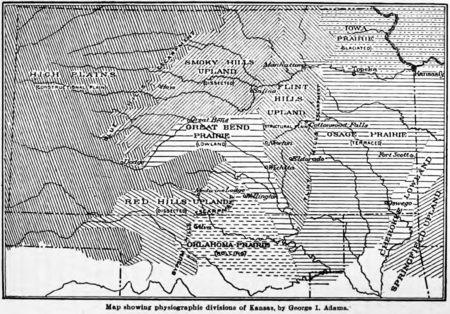Red Hills (Kansas) facts for kids
The Red Hills, also known as the Gypsum Hills, is a special natural area in southern and central Kansas. You can find it mostly in Clark, Comanche, and Barber counties. Unlike the flat Great Plains that Kansas is famous for, the Red Hills have rolling hills and a unique reddish color.
Why Are They Red?
The Red Hills get their amazing red color from the ground itself! Long, long ago, during a time called the Permian Period, this area was a dry, closed-off basin. Think of it like a giant bowl with no rivers flowing out. This basin was part of a huge supercontinent called Pangaea.
Sometimes, water would flood this basin, creating temporary lakes called playas. These lakes would often dry up, leaving behind layers of mud and a mineral called gypsum. The red color comes from iron in the mud that rusted, just like how metal turns rusty when it gets wet!
The Gypsum Hills
This area is also called the Gypsum Hills because there's a lot of natural gypsum here. Gypsum is a soft mineral that can dissolve in water over time. When the gypsum underground dissolves, it can create holes in the ground called sinkholes.
Sinkholes are common in the Red Hills. Two very famous ones are Big Basin and Little Basin, which you can find in western Clark County. They are like giant bowls in the earth!
Exploring the Red Hills
The Red Hills offer beautiful views and some small, steep canyons. If you like to explore, you might enjoy seeing some of the higher points in Clark County. These include Mount Nebo, which is about 2,441 feet (744 meters) tall, Mount Jesus at 2,340 feet (713 meters), and Mount Lookout at 2,320 feet (707 meters).


